The long wait is coming to an end! Both the Pimax 8K and the Pimax 5K Plus are finally being delivered to the first Kickstarter backers and the general public can now pre-order the two devices and even a new OLED version, the 5K Business Edition. Now that we know the final prices, the full written MRTV reviews of the Pimax headsets are coming up! Let’s start with the $699 Pimax 5K Plus.
Now the big question is: are the Pimax headsets worth the wait? Are these devices truly the next-gen VR devices that VR enthusiasts have been waiting for? The answer is a resounding YES! I am happy to let you know that the true second generation of VR headsets with wide FOV has finally arrived.
Are these headsets perfect though? Not at all, but its pros outweigh their cons and even though there are still quite a few kinks to iron out, the Pimax headsets still make all current generation devices look dated in comparison.There is no question: for VR enthusiasts who want the highest immersion possible right now, these are the headset to go for. However, there are notable differences between the 8K and the 5K Plus and against most people’s intuition, the cheaper 5K Plus model is better than the 8K in almost every way, and it is even $200 cheaper!
But let’s dive into the details.
Introduction
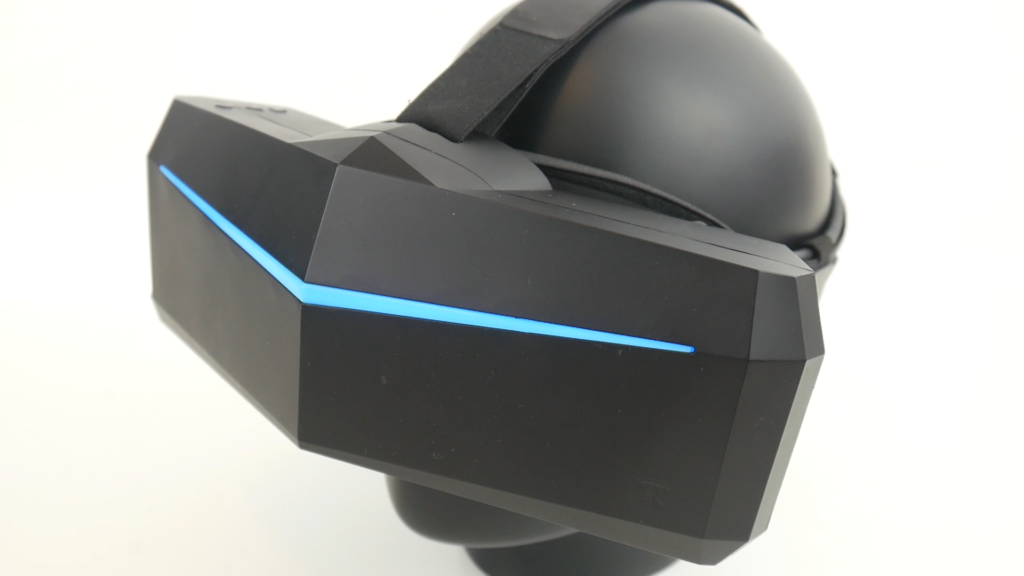
For all of you who have never heard of the Pimax 8K and 5K Plus: the headsets are the result of the most successful VR Kickstarter campaign ever, raising more than $4m US in the end of 2017. The main selling point that got the VR community excited were the wide FOV of 200° (diagonal) and its high resolution screens. The headsets were supposed to be delivered to backers in January 2018 but delivery was delayed until now.
Let’s have a look at the features of the final devices.
Features
The main difference to all of the current gen headsets like Vive, Rift and Odyssey is without a doubt the wide FOV. Where current generation devices probably have around 100° horizontal FOV, the new Pimax headsets boast a maximum of around 170° horizontal FOV (200° diagonal).
Also the displays are a visible step up from what the current generation has to offer. The “8K” version uses two screens with a 3840 * 2160 pixel resolution (4k) and the 5K model uses 2 screens with 2560 * 1440 pixels. However, the input signal to both devices is only 1440p, so the 5K headset receives its native resolution, while for the 8K model, the signal has to be scaled up. Therefore, you cannot hope for a clearer picture with the 8K but only for less SDE. But we will find out about that later.
There is another Pimax version in the pipeline that is called “8K X” which will drive the two 4k displays at their native resolution. Other than displays, all the features of the Pimax 8K and the 5K Plus are the same.
There is a manual IPD adjustment at the bottom right that will allow users to adjust the IPD from 60mm to 73mm. The area between the lenses reminds us of the Rift that also uses elastic textile materials here.
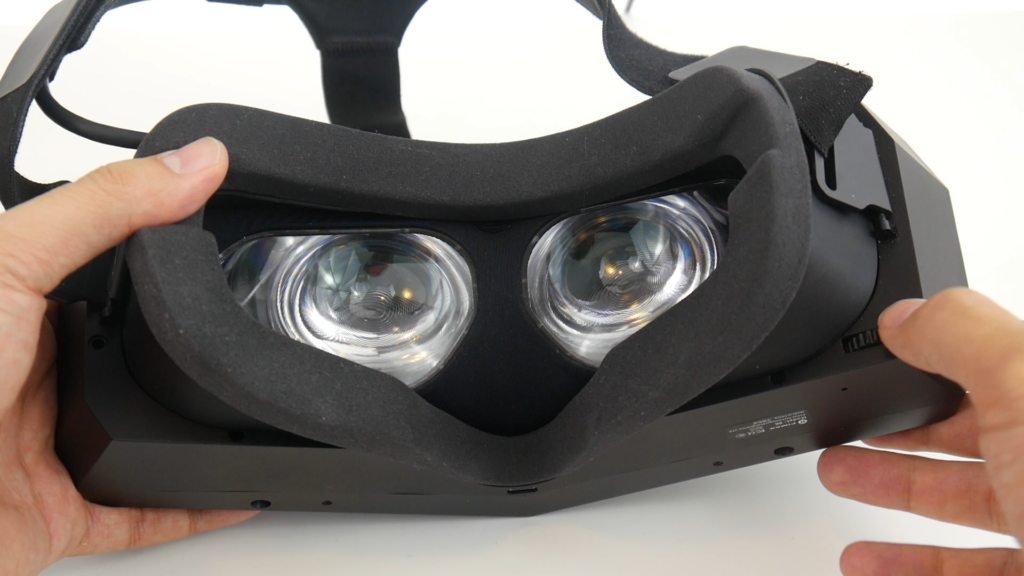
Manual IPD adjustment wheel on the bottom right corner of the device.
What’s special about the Pimax devices is that they were developed with modularity in mind. At the bottom of the devices you will find a USB-C connection that can be used by different kinds of modules that extend the functionality. There is even a second USB-C port hidden on the top of the device that will be used for the eye-tracking module.
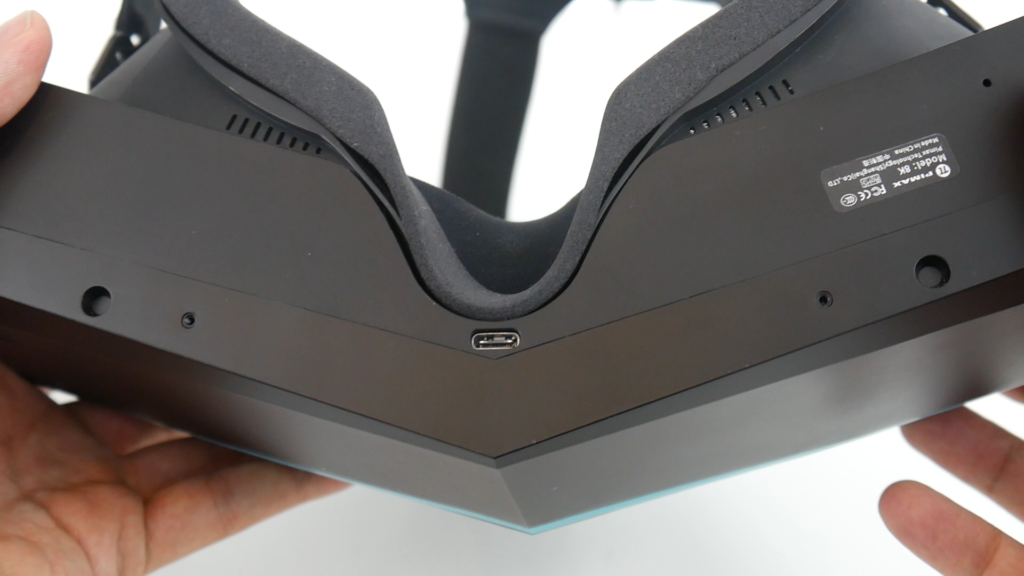
One of two USB-C extension ports on the device. The other one is located on the top of the device, hidden beneath the face-padding on top strap.
One of these modules that has already been developed and that I could test as well is the Leap Motion hand tracking module. With the module attached, your hands are represented in VR and can be used to manipulate the virtual worlds. It works like a charm and brings immersion to yet another level.

The Leap Motion module, attached to the USB-C extension port at the bottom of the device.
A lot of other interesting extension modules are on the way: a scent module, an eye tracking module and of course: a wireless adapter.
As what tracking is concerned, the Pimax devices are compatible with Lighthouse Tracking 2.0, just like the Vive Pro but they will also work if you still use the old 1.0 Lighthouses of the Original Vive.
There is a built-in microphone and the upcoming rigid headstrap that was not available yet for this review will feature built in headphones as well.
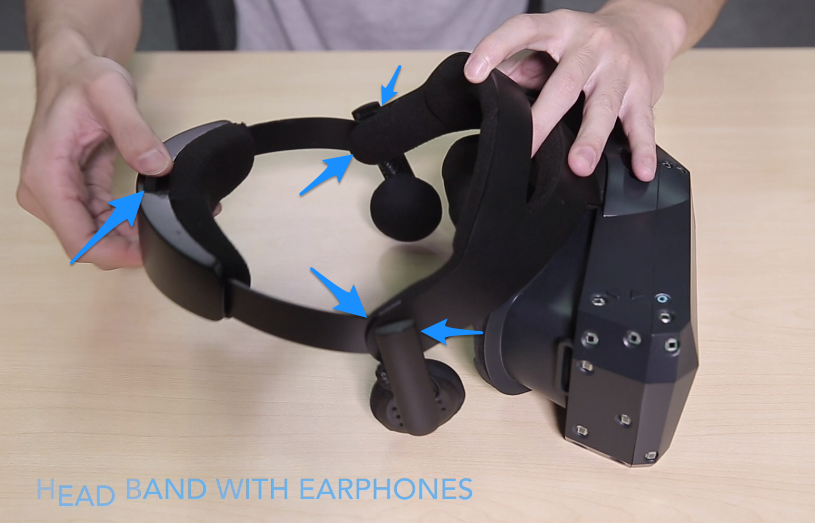
The upcoming rigid headstrap will come with built-in headphones. | Image courtesy Pimax
The devices come with a 5m cable that connects to your computer using DisplayPort and standard USB. There is an additional power adapter that plugs right into the cable.
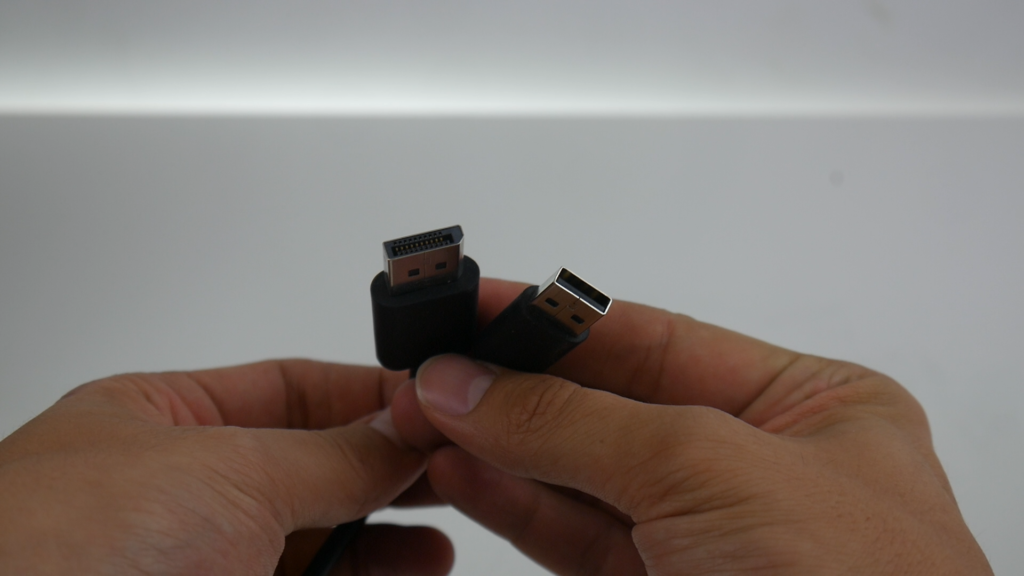
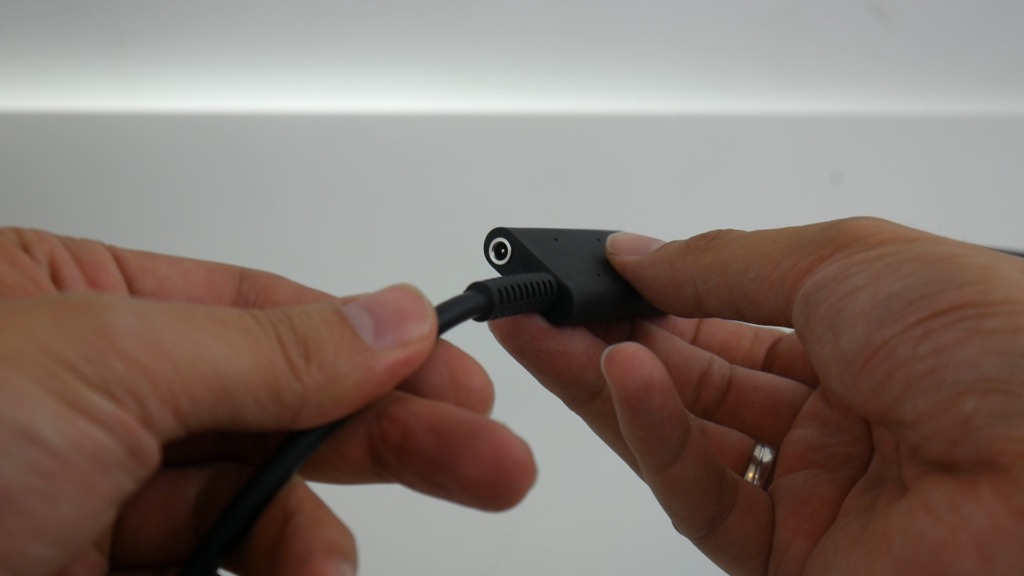
Both Pimax headsets are compatible with SteamVR games out of the box and even Oculus Rift games are supported without the need to install additional software like ReVive.
As what the prices are concerned, the Pimax 5K Plus will set you back $699 for the headset only, a whopping $200 dollars less than the Pimax 8K that costs $899. The Pimax 5K Business Edition that features OLED displays of the same resolution as the 5K Plus is priced at $999 for the headset only. The company also accepts a deposit of $300 for controllers and base stations, but we don’t yet have any information at what point in time these would be delivered.
So now that you have a basic understanding of what we are looking at here, lets get into the actual review!
Field Of View
Let’s not beat around the bush: the FOV of the Pimax headsets is truly amazing. The difference as compared to the current headsets like Vive Pro, Rift and Samsung Odyssey is just mind blowing and this improved FOV is clearly the star of the show here.
With the current headsets your window into the virtual worlds is limited to around 100° horizontally. You are just peeking into the world as if you look through binoculars.Without a doubt we all got used to this already, but having this limitation removed is in the best sense of the word: an eye-opener. Immersion-wise, that limitation was what was holding VR back.

With current VR headsets the Field Of View is severely restricted and it feels like looking through binoculars. | Illustration using a Skyrim VR scene
With the Pimax headsets, it is now more like looking through a ski mask than looking through binoculars. You are still aware that you are wearing something and you will be able to see borders on the right and left, but it is simply so much better. There is absolutely no comparison and once you go wide FOV, there is no going back. Whenever I try my old headsets nowadays I can’t quite believe how I ever could enjoy them, the jump to the 2nd generation is just so massive.

The wide FOV of the Pimax 8K and 5K Plus is just massive as compared to the current generation headsets. | Illustration using a Skyrim VR scene.
The Pimax headsets offer 3 FOV settings that can be changed in the accompanying driver software: Large, Normal and Small. According to my own measurements, the large FOV is around 170°, Normal is around 155° and Small at around 125° is still noticeably larger than what we are used to from the current generation of headsets, with an FOV of around 100°. All these FOVs are measured horizontally. I normally go for the Normal FOV for the reasons that I am going to outline in the next section.
Distortion
Unfortunately, the wide FOV introduces whole new technical problems that current generation headsets did not have to deal with to the same extent. The biggest problem is distortion. Panels are placed at an angled position to be able to cover a bigger FOV. Therefore lenses have to be constructed in whole new ways to deal with these new challenges in order to still depict virtual worlds that do not look distorted. All distortions that make the picture not look natural have to be dealt with by software. That is what the so called lens profiles are for that pre-distort the pictures in a way that shall make the picture look natural once they are being distorted by the lenses.
I was part of Pimax M1 tester group that gave the company feedback during the development process of the devices. During the 3 months of testing I came across two main kinds of distortion. First of all, distortion in the outer peripheral area of the vision. In this small outer area, you can notice distortion and the image looks warped and not natural.
This kind of distortion was actually not as bad as the other kind of distortion that I witnessed though. For the other kind of distortion that completely broke my immersion during the testing phase, the whole VR world would move with me instead of staying in place. If I moved my head to the right, static objects would also move to the right with me in VR and vice versa.
I must be honest here, for the most part of the 3 months that I tested the device I had dismissed the project because of this kind of distortion. Software version after software version, Pimax tried to come up with a lens profile that would correct that distortion but failed. It was just after the Pimax team had purchased additional optical hardware to measure distortion that they could solve this problem and that truly turned things around for me. The world no longer moved with me and I could finally enjoy the device.
As what the distortion in the outer peripheral vision is concerned, it is still clearly visible, especially if you look for it. To deal with this problem, Pimax has introduced the “Normal” FOV mode. In this mode, the outer peripheral vision is simply blacked out and therefore the distortion problem is solved. Since the normal FOV is still so much bigger than anything that is on the market right now, for me that is the sweet spot that makes the headset truly enjoyable, even though there might still be a bit of distortion as compared to low FOV headsets. But again, the added immersion of the increased FOV more than makes up for it. And it is true: once you go wide FOV, you can hardly go back.
Panels
Now let’s have a look at the panels. The Pimax 8K sports two 4k panels with a resolution of 3840 * 2160 pixels per eye. So having two 4k panels does not make the device an “8k” headset and that “8K” moniker can be simply dismissed as a marketing term. However, the resolution of 3840 * 2160 pixels is still enormous as compared to for example the 1200 * 1080 pixels per eye of the Rift and Vive. One still has to keep in mind though that these pixels are spread over a much wider field of view, so one to one comparisons are not really fair and we will simply compare through the lens pictures later.
The Pimax 5K Plus panels work at a lower resolution of 2560 * 1440 pixels. Now even though the resolution is lower here, it is important to understand that BOTH headsets are actually using 1440p as their input signal. So while the 5K Plus panels are driven at their native resolutions, for the 8K, the signal is simply scaled up. Therefore, you cannot expect a sharper picture here at all. The only benefit you might expect is less of screen door effect and we will compare that in through the lens pictures.
If you would really want to make use of those 4k displays, those would have to be driven at their native resolution of 3840 * 2160 pixels. This is impossible with the current 8K device though and that is where the upcoming 8K X model will come into play. That future model will exactly allow that and for sure I am also going to review it here on MRTV once it is ready.
Now before we compare the two Pimax models with each other, lets compare them with the current generation of headsets. I chose the Rift, Vive and Vive Pro for these comparison shots to give you an idea. Please keep in mind that we only see a part of the whole picture and the Pimax headsets actually show much more of the actual scene than the competition does.
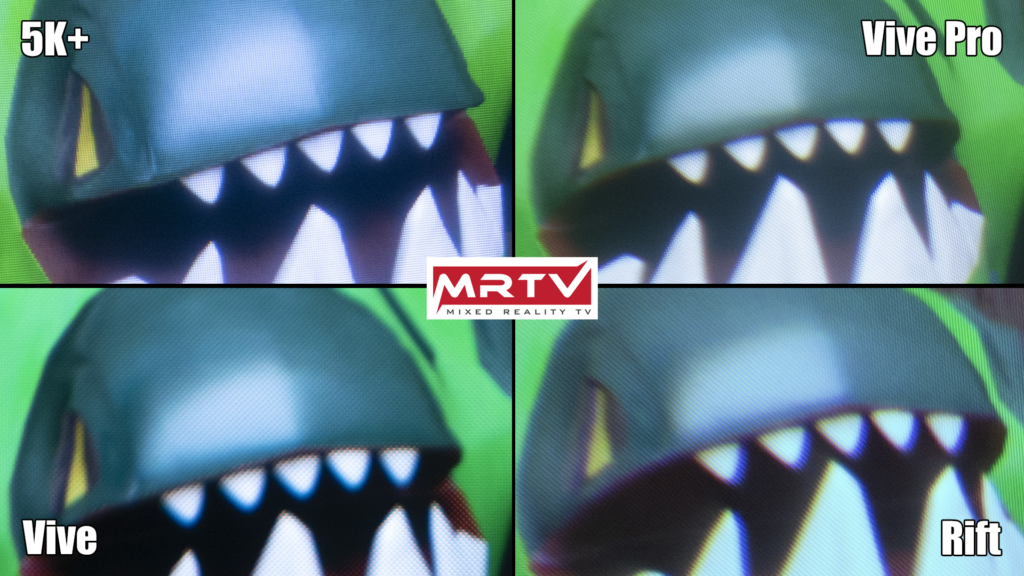
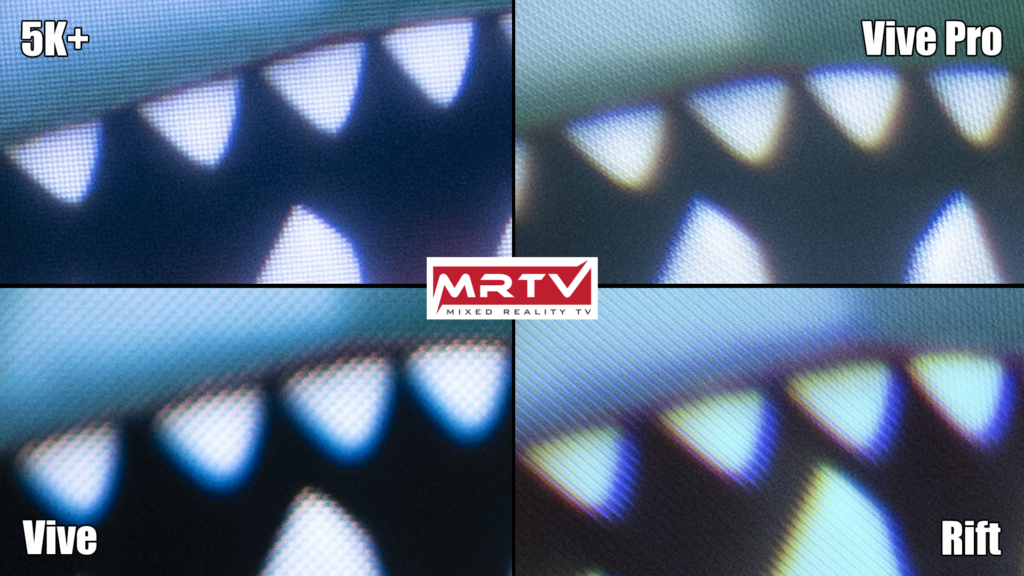
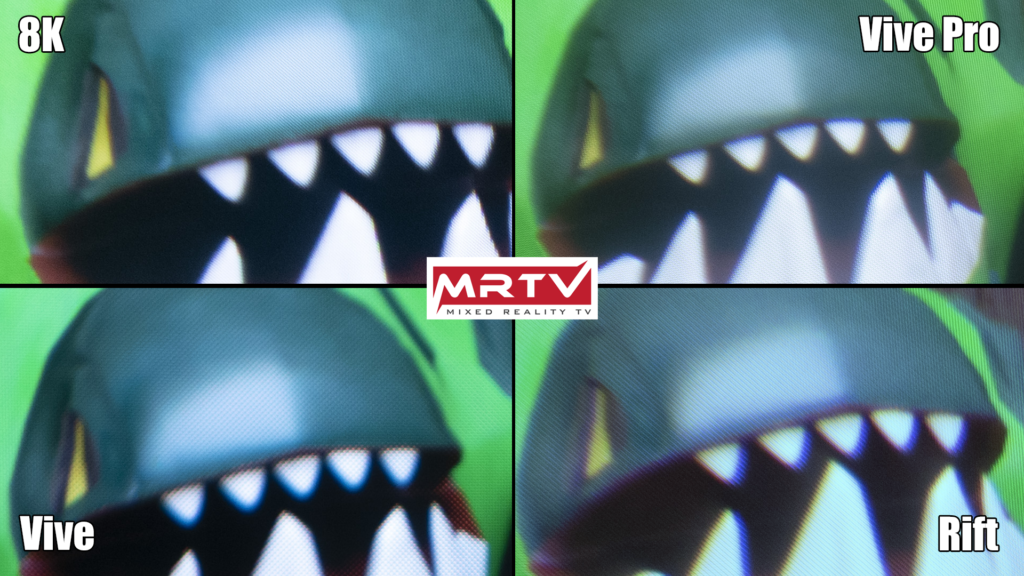
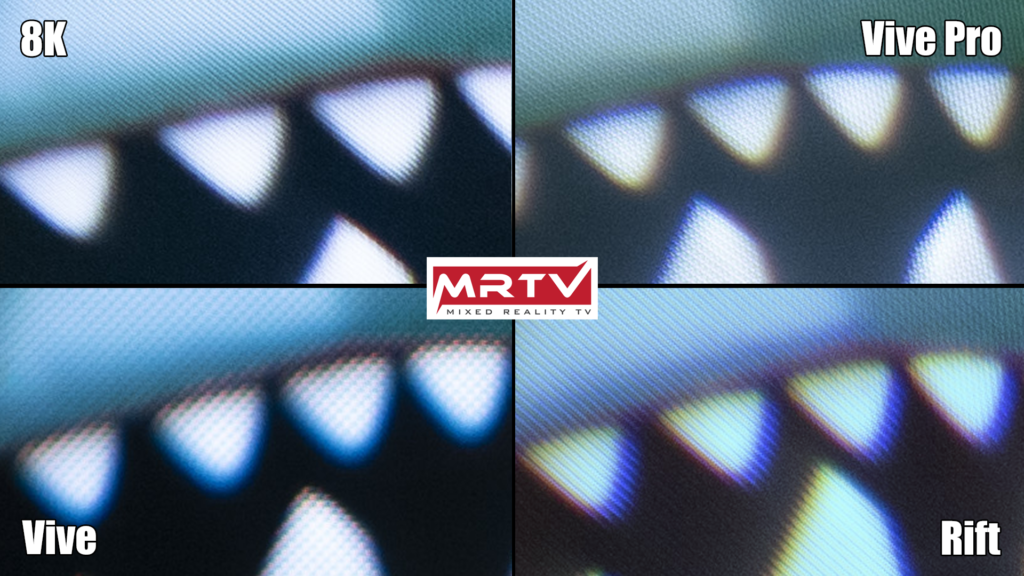
As you can tell, the pictures of both the 8K and the 5K Plus look much better than that of the Rift and Vive. For the comparison with the Vive Pro, it was already a bit harder to find big differences in picture quality, even though the Pimax headsets still have an edge here.
Now having that much improved FOV together with this kind of clarity is truly a joy. On op of that, the sweetspot is much bigger for the Pimax devices. Where for all the current generation headsets, you will still need to move the headset around a bit to find the perfectly sharp spot, for the Pimax you hit it every single time.
High clarity, little SDE and big sweetspot are a winning combination and for me both Pimax devices truly outdo the competition, especially taking the bigger FOV into account.
Now since both headsets are actually using LCD panels, we need to talk about black levels as well. Black levels on LCD panels are seldom as good as those found in OLED displays. For LCD panels, you always have the backlighting that would shimmer through and would lighten up black areas as well.
In direct comparison with the OLED screens of Rift, Vive and Samsung Odyssey, the Pimax headsets clearly cannot compete and darker games will look better with OLED panel headsets. For me it is not a deal breaker though since certain compromises had to be done to be able to sell an affordable wide-FOV headset. Anyways, I must clearly say that black levels might be a disappointment for fans of dark games. Once I receive a review unit of the Pimax 5K Business Edition, of course I will do another review and comparison.
So now let’s compare the Pimax 8K with the Pimax 5K Plus.
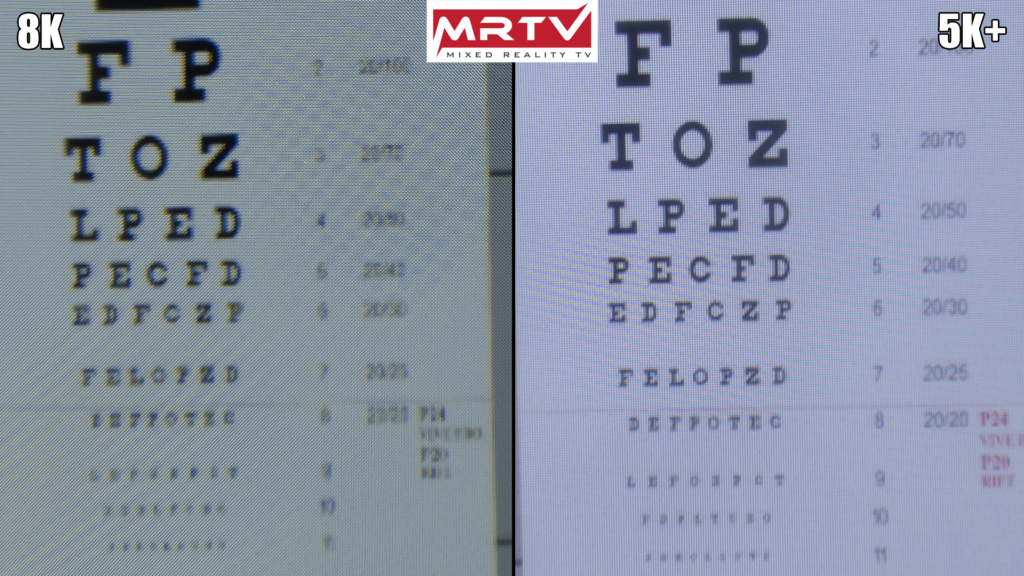
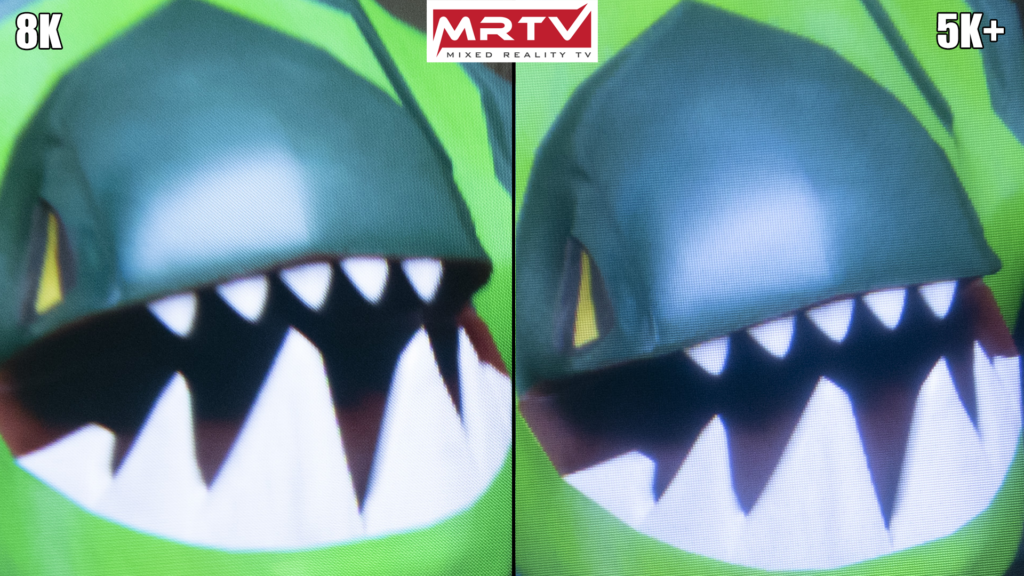
Leaving all setting the same, I preferred the 5K’s clarity over that of the 8K. The clarity most probably results from a better panel since the 4k panels of the Pimax 8K are quite new in production and use a PenTile subpixel arrangement as compared to the RGB Stripe arrangement of the Pimax 5K Plus.
Moreover, the 8K picture will be scaled twice. Once down before the signal is being sent over the DisplayPort and once up in the device itself. That results in a picture that is just not as crisp as that of the 5K Plus, it even looks blurry at times. For the 5K Plus, the picture does not have to be scaled at all and panels are driven in their native resolution.
The 8K should have an advantage over the 5K Plus as what the SDE is concerned, since more pixels mean less dark areas between the pixels. But looking at those comparison pictures, we do not actually see a huge difference in SDE and there might be quite a lot of people who prefer the horizontal pixel layout of the Pimax 5K Plus over the diagonal one of the Pimax 8K. Moreover, the 5K Plus displays each pixel with 3 subpixels (RGB stripe) whereas the Pimax 8K uses a PenTile display that only uses 2 subpixels per pixel. In my time with the headsets, the SDE of the Pimax 8K was more distracting to me than that of the 5K. However, that is a question of personal preference.
Unfortunately Pimax did not supply me with any more information on panel sizes, used panel technologies or any further reason as to why the 8K’s picture is not looking as clear as that of the 5K Plus. If I had choose which panel I would prefer, I would definitely go for the 5K Plus.
As what the colors are concerned the Pimax 8K has a slight edge over the Pimax 5K Plus. The colors of the 5K Plus do not look bad at all but they tend to look quite a bit cooler in color temperature as compared to the 8K. Also, the blacks look a bit darker on the 8K. The Pimax team has already confirmed that these differences exist and told me that they had not yet optimized colors at all and that they are going to do so via software patch.
Lenses
The lenses are custom made Fresnel lenses. They do a reasonably good job in allowing you to enjoy the wide FOV.
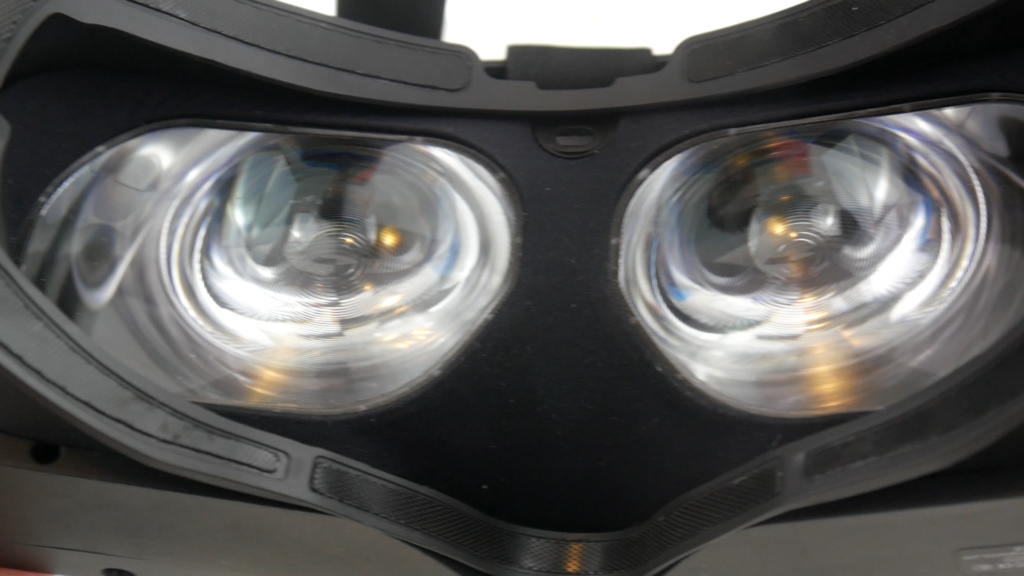
The Pimax headsets use custom made Fresnel lenses.
Pimax went through several lens iterations to arrive at the lenses in use now. I have witnessed the previous iteration and I can say that these are indeed a big step up, especially in terms of godrays that have been greatly reduced. There are still visible godrays in high contrast scenes though but the Pimax lenses have less godrays than Rift, Vive and Vive Pro.
Performance
Now let’s talk about performance. During the Kickstarter campaign Pimax announced that you will at least need a GTX 1070 as a minimum requirement. Based upon that, I bought a GTX 1070 laptop at that time. Unfortunately it turned out that actually this GPU is not powerful enough to fully enjoy either of the devices!
You will be able to run less demanding games on a GTX 1070, like for example Job Simulator, but if you want to play more demanding titles, you will have to go down with the quality settings in the “pitool” driver software. While that is possible and will help with frame rates, the games will look so bad that it is not actually worth it anymore.
Now again, I must clarify that this is the case for both headsets, the Pimax 8K and the 5K Plus. If you had hoped that the 5K Plus is a less demanding Pimax headset, I must unfortunately disappoint you. There are nearly no performance differences and the headsets pump out the same amount of fps values for the different games on the GTX 1070. So again, the Pimax 5K Plus is NOT going to decrease your minimum system requirements, it is just as demanding as the 8K, which quite surprised me. The only difference is that it will look better than the Pimax 8K and if you want the Pimax 8K to look as good as the 5K Plus, you will need to increase the supersampling value.
Here are some fps values for games that I tried on the GTX 1070 with the Pimax 8K/5K Plus at PiTool quality setting 1 and SteamSS 100%
SteamVR Home (73), Job Simulator (73), Budget Cuts (72) , Rec Room (48) , Skyrim (46), Elite Dangerous (34), Project Cars 2 (32) , Raw Data (26)
So as you can tell, you can play some of those games but they won’t look or play great. When PiTool is at quality setting 1 with SteamSS at 100% the picture looks alright, still better than Vive and Rift and very comparable to Odyssey / Vive Pro.
To be able to really enjoy the Pimax headsets, consumers will need a high-end computer. Just because of this headset, I bought such a computer which set me back around $3000. At this price it is also ready for the next generation of VR. This computer is also ready for the new RTX graphic cards:
GTX 1080ti (but will likely be replaced by 2080ti at one point, made sure to make this 2080ti ready) http://geni.us/rVXQ
Asus Rog Strix Z370-F Gaming Mainboard http://geni.us/cOpoT
Intel Core i7 8700k Processor http://geni.us/hml9Do
32GB DDR4 Ram (G.Skill Ripjaws)
1 TB Samsung SSD NVMe http://geni.us/FnSW
4TB Seagate HDD http://geni.us/wgsIhxA
Fractal Design Define R6 Blackout Case http://geni.us/I5CQ
Seasonice 850W Focus Plus Power Supply http://geni.us/txdn
be quiet! Dark Rock 4 cooler http://geni.us/lSm7
With this computer, I ran the same games as above and now I could finally enjoy them.
SteamVR Home (91), Job Simulator (91), Budget Cuts (91), Rec Room (75), Skyrim (91), Elite Dangerous (60), Project Cars 2 (52), Raw Data (75)
So without a doubt, for both headsets, the Pimax 8K and the Pimax 5K Plus you at least want to have a GTX 1080ti. Games and apps will run well and the interesting part is that there is still room up for improvement. Games at PiTool setting 2.0 look gorgeous but still with the 1080ti won’t run smoothly. The devices are already a joy with the 1080ti but will probably get better and better with each new GPU generation, so these headsets are truly hardware sellers, just like “Crysis” was.
In terms of panel refresh rate, Pimax 8K runs at 80hz, Pimax 5K Plus runs at 91hz. That is an 11hz difference and it actually does show. Especially when doing fast head movements, pixel persistence is better with the Pimax 5K Plus that runs at 91Hz. For the Pimax 8K, the world would ever so slightly move with your fast head movements. This becomes especially visible when you change the directions of your head movement and the VR world would still continue to move in the old direction for the fraction of a second (“wobbling”) before following you.
On top of that I also perceive distortions as more severe on the Pimax 8K. I use the term “perceive” because probably the actual distortions are very comparable, since the optics and lens distortion profile are the same. But still, the same lens profile that counteracts distortion is being applied to 91 frames per second on the Pimax 5K Plus, while that only happens 80 times on the Pimax 8K. On top of that, on the Pimax 8K, the lens distortion profile is applied to the rendered picture and sent to the headset. Now in the headset, that pre-distorted picture gets upscaled and during this upscaling process, probably the pre-distorted picture get altered to a degree that simply makes distortion more perceivable. These are all theories but the fact remains that I and several others that tried both devices do see quite a big difference in terms of distortion on the Pimax 8K and the Pimax 5K Plus.
As already mentioned above, there aren’t really any performance differences between the 8K and the 5K Plus. Only difference is that at the same settings, the 5K will look better and you might need to increase supersampling or quality settings for the 8K to make the picture look as good, which in term will take up more resources.
So will future graphics cards make the 8K look any better than the 5K Plus? Highly unlikely, because the input signal will still be the same as with the 5K Plus. If you are looking for a Pimax device that will without a doubt look better with future graphics cards, wait for the 8K X model that will drive the 4k displays at their native resolution.
Comfort
The Pimax headsets are much lighter than they look. When you first pick them up you will be surprised by their light weight because they do look much more bulky. Comfort-wise I would say it is on par or even a bit more comfortable than the original Vive. There is ample space for your nose so you won’t feel any unwanted pressure in that area like in other headsets.
The face-padding, similar to Vive as well, is made from a foamy material and is attached to the device with velcro. Pimax says they will offer several different sizes of it.
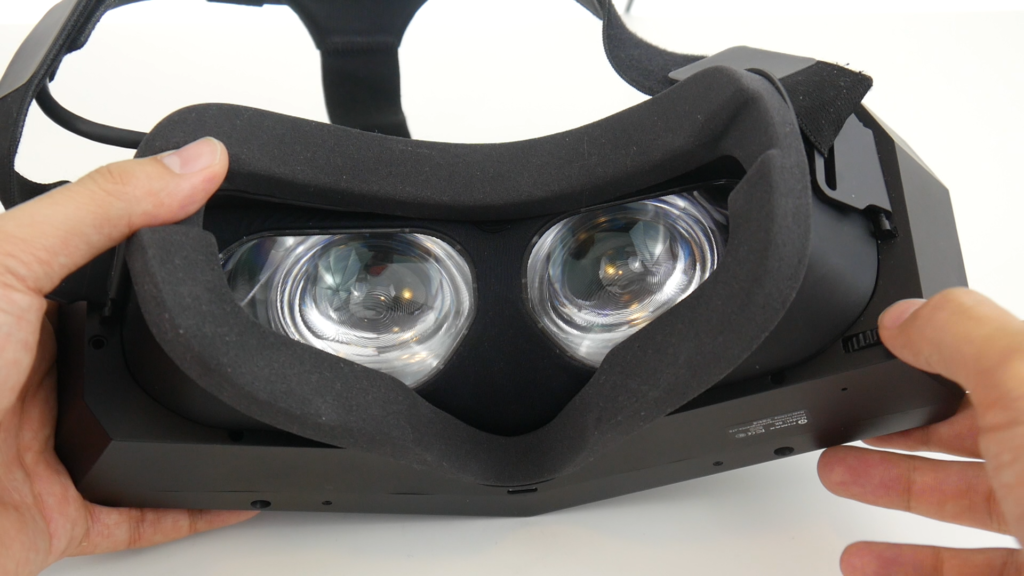
The face-padding is interchangeable and connected to the headset with velcro.
My headsets came with a simple elastic headstrap. It does the job but Pimax is working on a better rigid headband that will balance the device on your head in PSVR style and I am very much looking forward to it. Until that time has come, I have modded the HTC Vive Deluxe Audio Strap onto one of the headsets which is really simple and improves comfort a lot. You can find the modding instructions here.
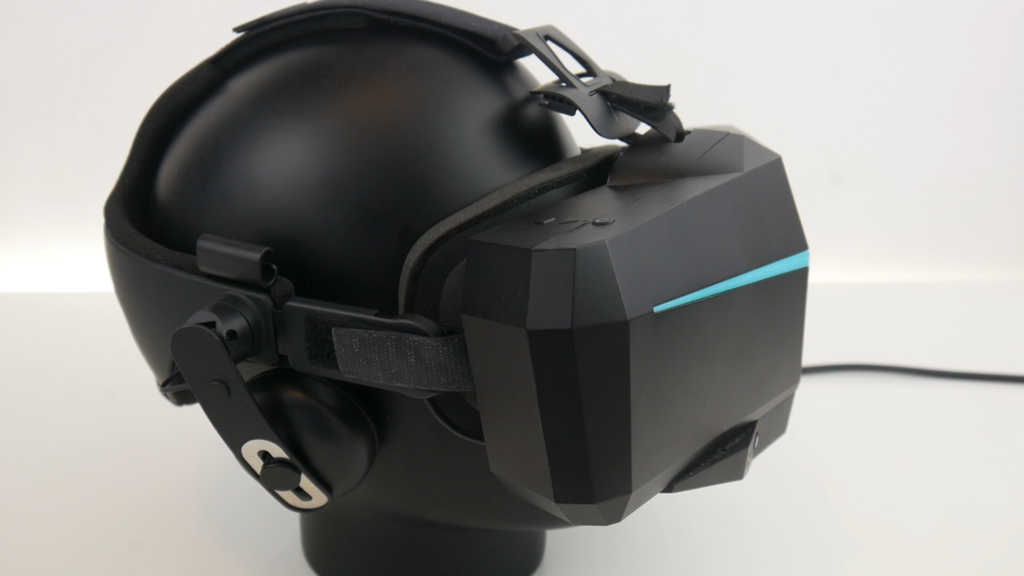
Modding the HTC Vive Deluxe Audio strap onto the Pimax headset. Works like a charm.
Now lots of people are wondering if you can wear glasses in the headsets. And I have some good news for you: yes, you can! There is more space for glasses than for example in the original Samsung Odyssey and in the original Vive.
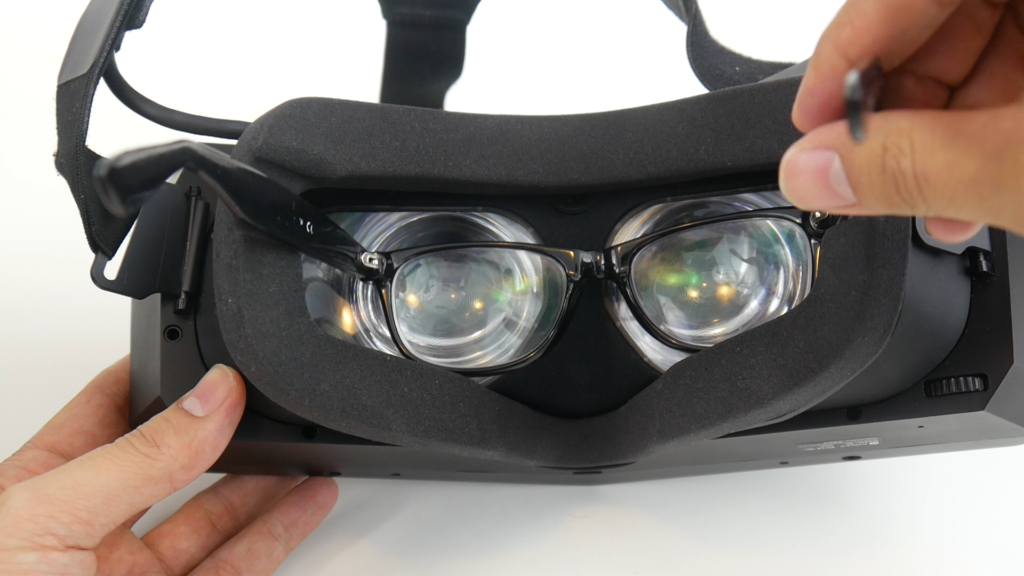
However, the lenses are very close to your eyes and they will therefore also be really close to your glasses. This might cause scratches so you better add some spacing between the headset and your glasses. Or you could also go for the customized prescription lens frames that were part of the Kickstarter. Anyways, most people wearing glasses should be fine with the new Pimax headsets. Overall I can conclude that the Pimax headsets are comfortable devices. Much more comfortable than they look.
Controllers
The Pimax controllers are not yet ready. Once they ship in 2019 they will closely resemble the Valve Knuckles controllers. There will be a version with a trackpad and another version with a thumbstick. Of course I am going to review both of them once they are available. Until then you will need to use the Vive Wand controllers.
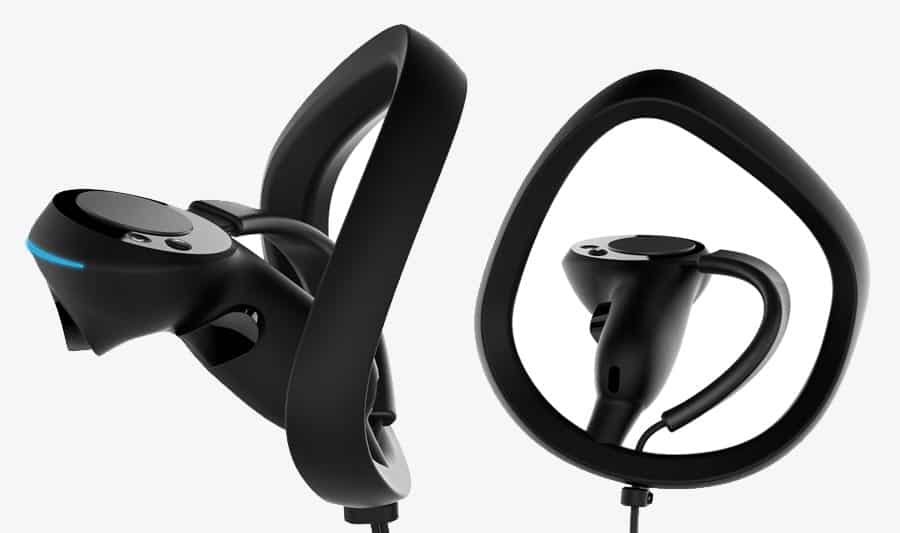
The upcoming Pimax controllers look like the love child of the Valve Knuckles and the Oculus Touch controllers.
Microphone
After the Vive Pro microphone disaster I was quite a bit anxious to try the microphone. The Vive Pro was plagued by terrible pop noises that made the device not suited for livestreaming with the built-in microphone. For Pimax I am glad to say it does not have these problems at all. There are absolutely no pop noises and you will not need an additional microphone on top of the built-in one in order to talk to your fellow players or to record a livestream. The only thing that should be noted is that recording volume is not quite loud enough and that these levels still need to be adjusted manually which is no problem though.
Game Compatibility
The Pimax headsets are compatible with nearly all of the SteamVR games and most of them simply work out of the box which is kind of surprising, taking into account the bigger FOV that they have to be rendered in. However, the experience is not as plug and play as you might be accustomed to from your Vives and Rifts. There is still some fine tuning involved and you must find the perfect PiTool quality settings yourself that works the best for your specific setup. There are quite a few variables in place. The PiTool quality setting, the Steam Supersampling and a few other compatibility settings that you will find well hidden and not really well-explained within the PiTool. It is definitely a big difference to what you are used to and hopefully there will be automatic profiles for games in the future.
A nice surprise is that the Pimax headsets are compatible with Oculus Rift titles out of the box. So you don’t need to download and install additional software like ReVive. You can simply import the Oculus titles into the PiTool software and start them from there. It works surprisingly well and playing Oculus games like Robo Recall and Lone Echo with that huge FOV and the much improved resolution over the Rift is just a true joy. I am personally playing those incredible titles again just because they look so much better than they do on the Rift.
While the majority of games look really great on the system, the huge FOV does cause some new problems. You might have to grow another VR stomach all over again because free locomotion with that huge FOV might make you feel sick. I love free locomotion and for the current generation of headsets I always use free locomotion but for the big FOV headsets I had to get used to to playing Skyrim using free locomotion all over again. Also for some games the comfort settings like restricting the FOV using vignettes do not work anymore because wrong areas of the field of view will be restricted. So hopefully as the next generation of VR headsets become more and more popular, game developers will patch the games accordingly.
Conclusion
It was truly worth waiting for the Pimax headsets. The Pimax 8K and the Pimax 5K Plus are the first true second generation VR headsets that are available for consumers. Even though the Pimax headsets are not perfect, the pros by far outweigh the cons and make all of the competition that is currently on the market look dated in comparison. Especially the increased FOV is a true game changer. After having used the Pimax for a while now, there is absolutely no going back to the current generation low FOV headsets. The jump from Rift, Vive, Vive Pro and Odyssey to the Pimax is tremendous and you will easily get used to this increased immersion. But then going back to Rift and Vive you will question yourself, how could you ever enjoy these prehistoric low FOVs.
The visuals in both headsets look great and without a doubt better than Rift and the original Vive. However if you come from the Samsung Odyssey or the Vive Pro you should not expect huge improvements in terms of clarity or resolution. The visual clarity and the visible screendoor effect are only slightly better on the Pimax devices as compared to the Vive Pro and the Samsung Odyssey. You have to take into account though that this is true over the whole bigger FOV, and therefore this is quite the achievement.
If you are looking for the next big leap in picture quality though you should wait for the upcoming Pimax 8K X because that device will have a native 4k input resolution per eye. However if you are VR enthusiast and you want the headsets with the highest immersion possible that are available on the consumer market right now, then these are the headsets to go for.
At the end of this review there is only question left: should you go for the Pimax 5K Plus or should you go for the Pimax 8K? And I strongly suggest you to go for the Pimax 5K Plus. The overall picture quality is simply better thanks to the better panel and its RGB stripe matrix subpixel structure. Moreover, the Pimax 5K Plus receives the native resolution as input signal and there is no upscaling or downscaling involved which unfortunately decreases the picture quality on the 8K. SDE is similar on both devices since the 8K cannot benefit from the bigger amount of pixels here because of the inferior panel technology. On top of all of these advantages, the 5K Plus even runs at a higher panel refresh rate of 91hz as compared to the 80hz of the the 8K. The cherry on top of the 5K Plus is the price point: a whopping $200 less than the 8K that you can spend on base stations and controller instead.
So go for the Pimax 5K Plus now and then further down the road once you are ready for a true upgrade, go for the Pimax 8K X in the future.
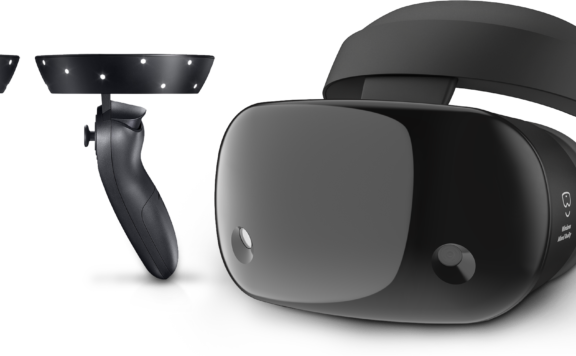
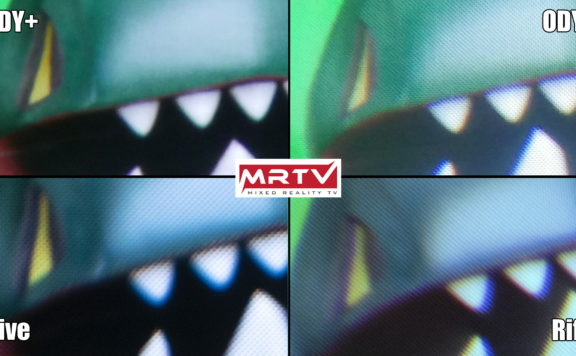
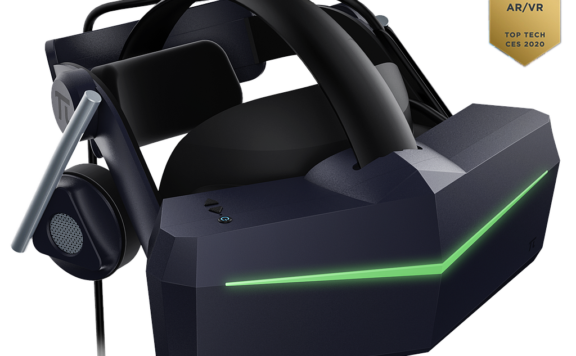
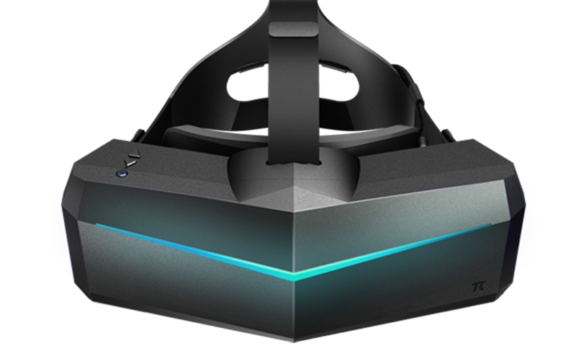
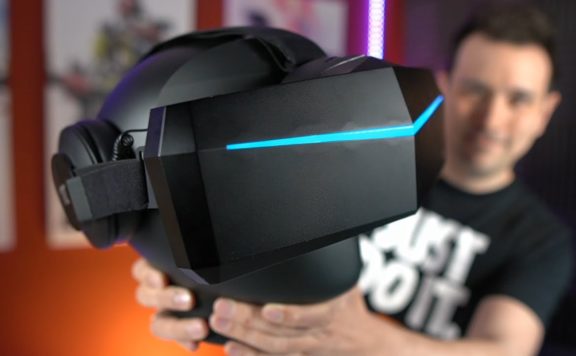
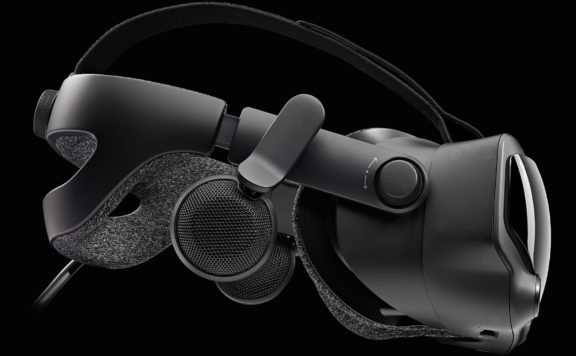
billy wallace
THe chromatic aberration on the pimax 5k looks way better than rift or vive!
Jam Fuzzleton
>So go for the Pimax 5K Plus now and then further down the road once you are ready for a true upgrade, go for the Pimax 8K X in the future.
I expect that once a card comes out that can run the 8K X well, there will be better wide FOV options available. Pimax is making this because some people asked for it, but they do not recommend it.
Sebastian Ang
It seems two RTX 2080ti will be able to run the 8K X.
google_user
Fantastic review. I really can’t wait to get my 5k ,I’m a late backer so hoping they improve the production times soon. At its current rate it will be well into 2019..
Nigel Revill
I have ordered a Pimax 5k+ , but I am now undecided whether it should be the 8k version. My primary use is as a RC Helicopter training simulator (AccuRC on steam). So the objects get relatively small on the screen. I have just bought an O+ , and it is the best picture yet (Rift now sold).
It would be great if someone can try AccuRC (demo on steam) and give me their opinion.
Thanks
Nigel